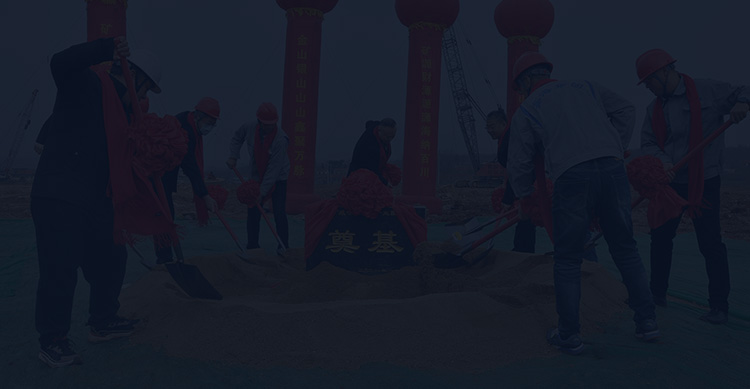
Antimony is an important metal element, silvery white, with a high melting point, high density and good thermal stability. It is widely used in alloys, flame retardants, batteries and semiconductors. However, there are many types of antimony minerals. According to geological causes and mineral combinations, antimony ores can be divided into single antimony ores and polymetallic antimony ores. There are generally five types of common antimony ore dressing process flows, namely hand selection-heavy medium selection-flotation, hand selection-gravity selection-flotation (gravity selection), heavy medium selection-gravity selection-flotation (gravity selection), hand selection-flotation, and single flotation. Each process has its applicable ore type. Details such as fineness and reagent use in the dressing process will affect the final antimony concentrate output. Therefore, it is necessary to optimize the selection based on the properties of the ore and the results of the dressing test.
According to geological genesis and mineral combination, antimony ores can be divided into single antimony ores and polymetallic antimony ores. Polymetallic antimony ores include secondary antimony minerals and non-stibnite antimony sulfide minerals. They can be roughly divided into 6 types, namely single stibnite, gold-containing stibnite ore, oxygen-sulfur mixed antimony ore, tungsten-gold-arsenic antimony ore, tin-lead-zinc-arsenic antimony ore and mercury-containing antimony ore.
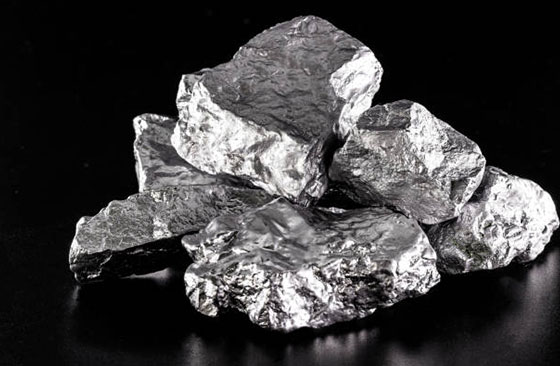
Single stibnite: The content of other metal minerals in the ore is very small. For example, the ore processed by Hunan Tin Mine is mainly stibnite, a small amount of pyrite and antimony oxide ore, and the gangue is mainly quartz, followed by calcite, barite, kaolin, gypsum, etc.
Gold-containing stibnite ore: This type of antimony ore almost always contains arsenic, and exists in the form of arsenopyrite, which is closely associated with gold. Generally, when antimony-arsenic is separated, antimony-gold is also separated. At present, the reserves of this type of ore are not large, so the scale of the plant is also small.
Oxygen-sulfur mixed antimony ore: There are not many antimony ores of this type. The minerals do not contain arsenic, but there are relatively high amounts of antimony oxide minerals. Currently, the only way to recover the oxide ore is by gravity separation. Therefore, the recovery rate is not high, generally <80%.
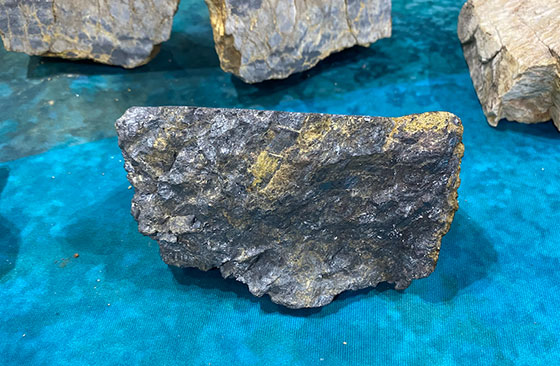
Tungsten-gold-arsenic antimony ore: This type of antimony ore is rare. In the minerals, in addition to antimony ore, the gold content is also high, which also has recovery value. Tungsten can also be recovered as a by-product.
Tin-lead-zinc-arsenic antimony ore: Antimony in this type of ore appears as brittle sulfur antimony lead ore, antimony tin-lead ore, etc., so the antimony concentrate contains a large amount of lead and cadmium stone.
Mercury-containing antimony ore: The main minerals of this type of ore are stibnite and chensha, and the content of the two minerals is unstable. The upper part of the deposit is high in mercury, while the lower part is high in antimony.
There are generally five types of antimony ore dressing processes, namely hand selection-heavy medium selection-flotation, hand selection-gravity selection-flotation (gravity selection), heavy medium selection-gravity selection-flotation (gravity selection), hand selection-flotation, and single flotation method.
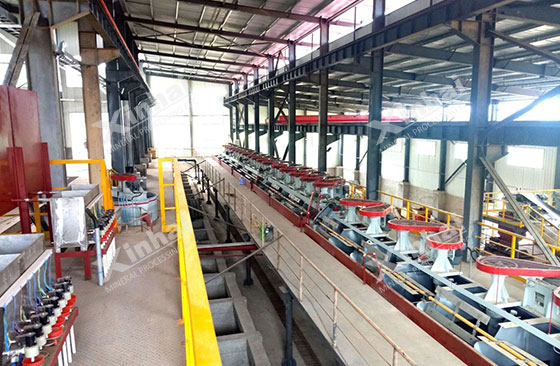
Hand selection-heavy medium selection-flotation: The coarse particles of -150~35mm in the original ore are hand-selected to select the lump concentrate and discard the stone; the particles of -35~10mm level are separated by heavy medium selection to discard 43% of the waste stone, and the heavy products are crushed by two stages of idle road and combined with the products of -10~0mm level in the original ore and sent to the ball mill. Then the antimony concentrate is obtained by the flotation process of one coarse three fine three sweep. The grinding fineness of flotation is 54~60%-200 mesh. In the natural PH ore pulp, a certain amount of xanthate, lead nitrate, pine oil, shale oil, kerosene and other flotation stibnite are added.
Hand selection-gravity selection-flotation (gravity selection): The coarse grade of -150~28mm in the original ore is hand-selected to select the lump concentrate and discard the waste rock. After the -28~16mm grade ore particles are closed-circuit crushed to 16mm, they are combined with the product of -16~0mm in the original ore, and then divided into three grades of -16~8mm, -8~2mm, and 2~0mm, and then three-stage jigging is carried out to obtain the concentrate. The tailings are sent to the second stage of jigging after grinding, and then the second stage of jigging concentrate is obtained. The tailings are dehydrated and ground, and the antimony sulfide concentrate is obtained by the flotation process of one coarse, two fine and two scavenging. The flotation tailings are recovered by shaking table. Antimony oxide.
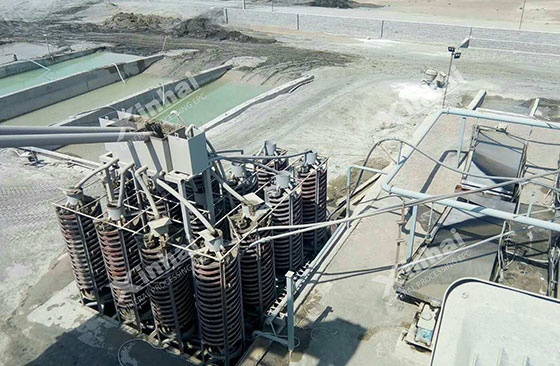
Heavy medium ore dressing-gravity selection-flotation (gravity selection): The ore is crushed to 20mm in three stages and one closed circuit. -20~4mm grade particles are removed by heavy medium to remove 40~50% of waste rock to obtain mixed concentrate, which is then fed into flotation. The product in the tank is sent to the re-selection operation after flotation to obtain tin concentrate. The fine mud of the middling ore in the re-selection operation before flotation is desulfurized by flotation and then sent to re-selection to obtain fine mud tin concentrate. The mixed concentrate of sulfide ore is separated by flotation to obtain antimony-lead mixed concentrate, zinc concentrate, pyrite, and arsenopyrite mixed concentrate (used as heavy medium). The grinding fineness of flotation is 74%-200 mesh; the flotation reagents are calcium oxide, ammonium persulfate, copper sulfate, butyl xanthate and orange alcohol oil.
Hand selection-flotation: first select large concentrates by hand selection and discard some waste rocks, and at the same time pre-enrich the ore entering the flotation operation to reduce production costs. After selection, the minerals are fed into the ball mill for grinding, so that the grinding particle size reaches -200 mesh, accounting for 70%-80%. Add quantitative flotation reagents to the slurry after grinding, such as xanthate, No. 2 oil, lime, etc. for flotation, and finally obtain antimony concentrate.
Single flotation method: This method can be used not only as a single antimony sulfide beneficiation process, but also as a multi-metal antimony beneficiation process. In the flotation process, the commonly used beneficiation collector is butyl xanthate or a mixture of shale oil and ethyl thiourea, and the frother is pine oil or No. 2 oil for flotation.
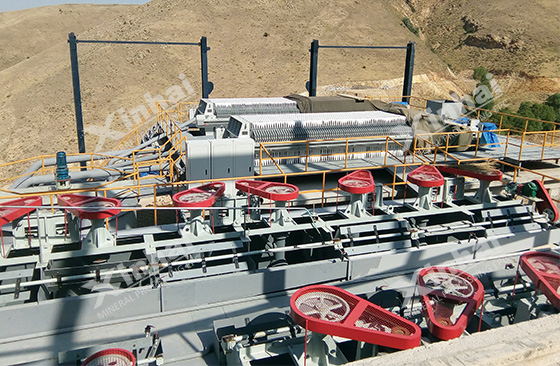
The above is an introduction to the types of antimony ore and the ore dressing process of antimony ore. In actual beneficiation plants, due to the complex properties of antimony ore and the different elements contained, it is impossible to generalize and blindly select the process flow. It should be based on the properties of its own antimony ore. Therefore, it is recommended to conduct beneficiation tests and design suitable antimony ore beneficiation process flow through test analysis.
Xinhai Mining can not only conduct beneficiation tests, but also conduct ore property research, and then design suitable process flow. At the same time, it can also customize a complete set of beneficiation equipment according to the process to realize the interests of the beneficiation plant while accelerating the construction of the beneficiation plant.
To find out more about our products and solutions, please fill out the form below and one of our experts will get back to you shortly.